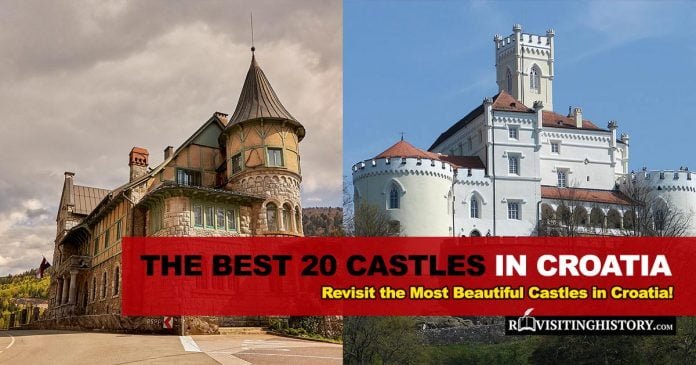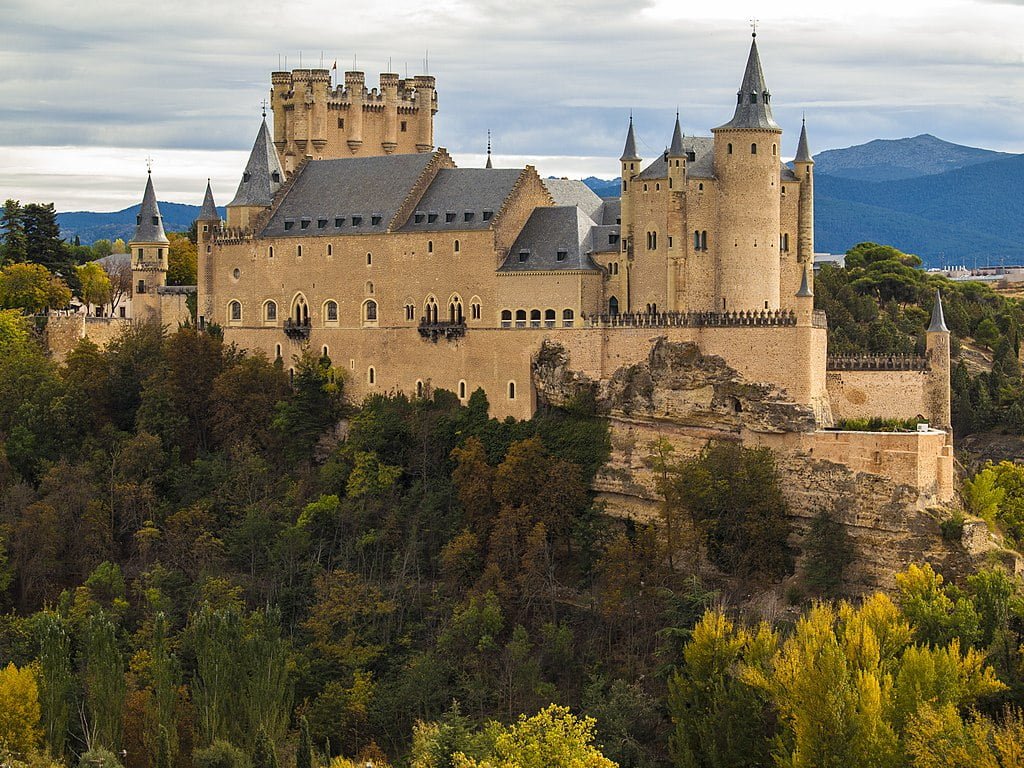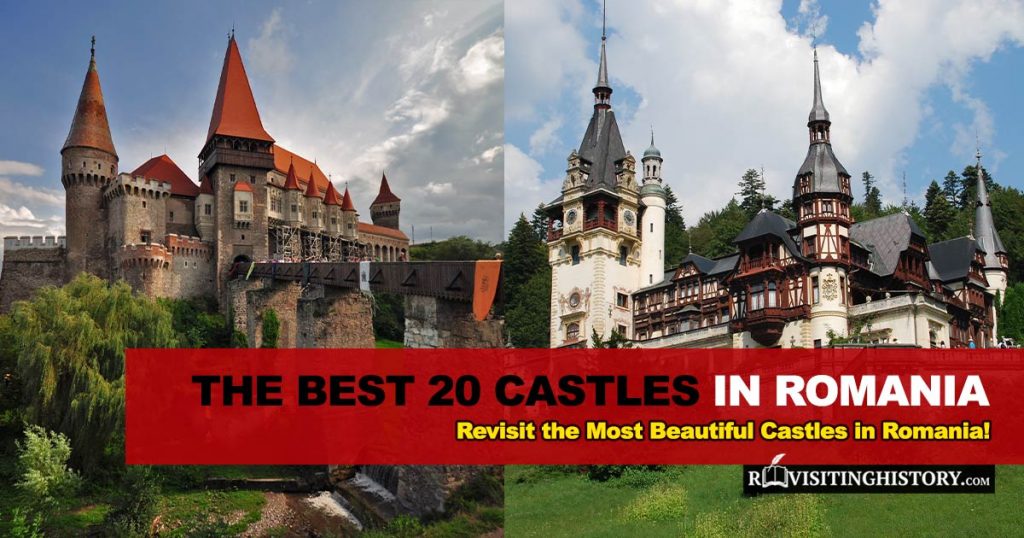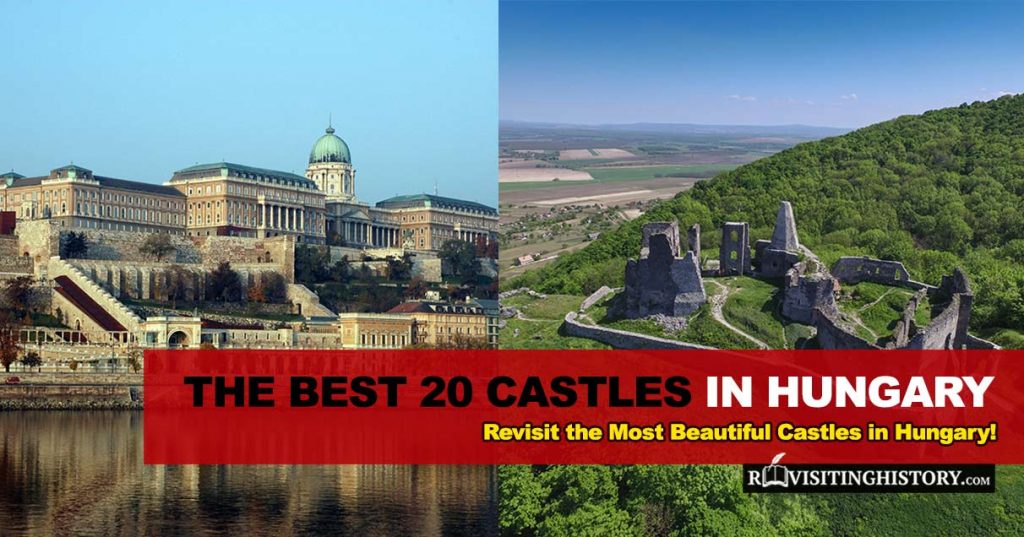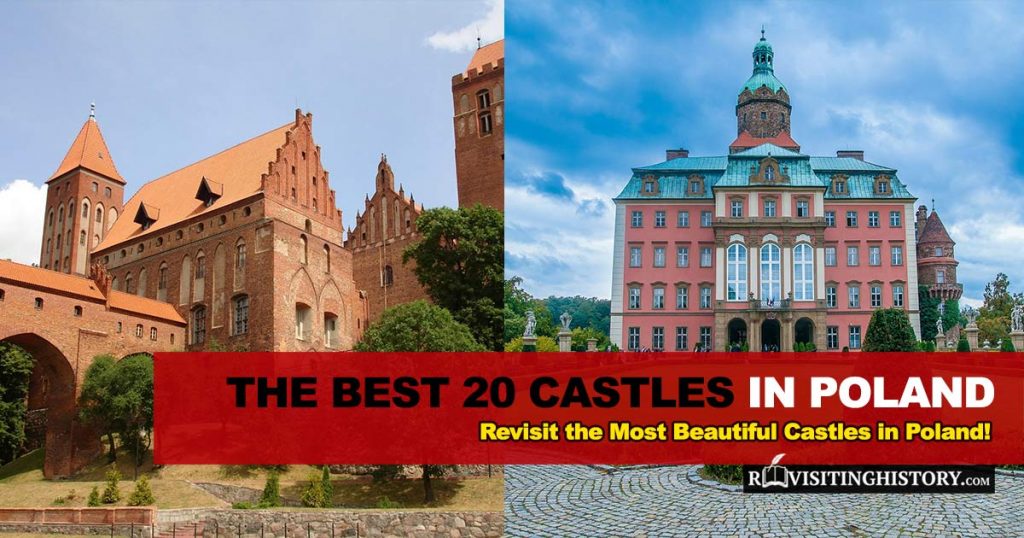Croatia has seen the rise and fall of several dynasties throughout history and with them, their castles. This means that the country has grand palaces from the 2nd century BC through to the 17th century.
This disparity allows visitors like you to explore different times, experience their people’s lifestyles, and learn about their specific history. To help you make the most of your trip, we’ve compiled a list of the 20 most beautiful ones you simply have to visit.
The first section covers the ten most famous castles in Croatia. These palaces have made their way into mainstream tourism and regularly see significant tourism. The second section goes over just as beautiful but less visited places for avid travelers looking to explore niche spots.
Table of Contents
10 Most Popular Castles to Visit in Croatia
The order of the list is based on Google search volume of each castle = popularity.
1. Klis Fortress
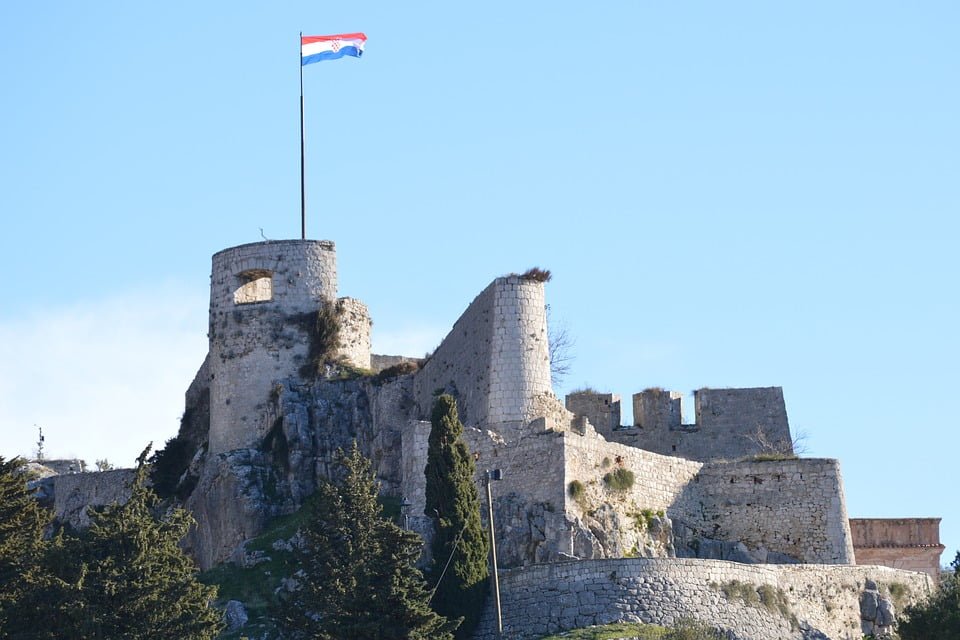
The Illyrians built Klis Fortress along the Dalmatian coast in 2 BC. The Roman Empire took over in 9 AD. And even though there were other fortresses and strongholds in the area, Klis was the most important at the time. The fortress changed names several times. Initially, the Romans called it ‘Anderium.’ Then they shifted to ‘Clissa,’ before finally settling on ‘Klis.’
After the Roman Empire fell, the fortress became a vital part of the Croats Empire, housing the first Dukes of the Croatian Duchy. Also, it briefly became an office of the Knights Templar.
This rich history is intriguing and captivates visitors, but it isn’t the only reason for the castle’s fame. The internationally-acclaimed TV series Game of Thrones shows Klis Fortress as Daenerys Targaryen’s ‘Mereen,’ which attracted significant attention.
- Location: Split
- Time built: 2nd Century BC
- Architectural style: Roman era
- Touring: Allowed. Visit the official website for more information.
2. Trakoscan Castle
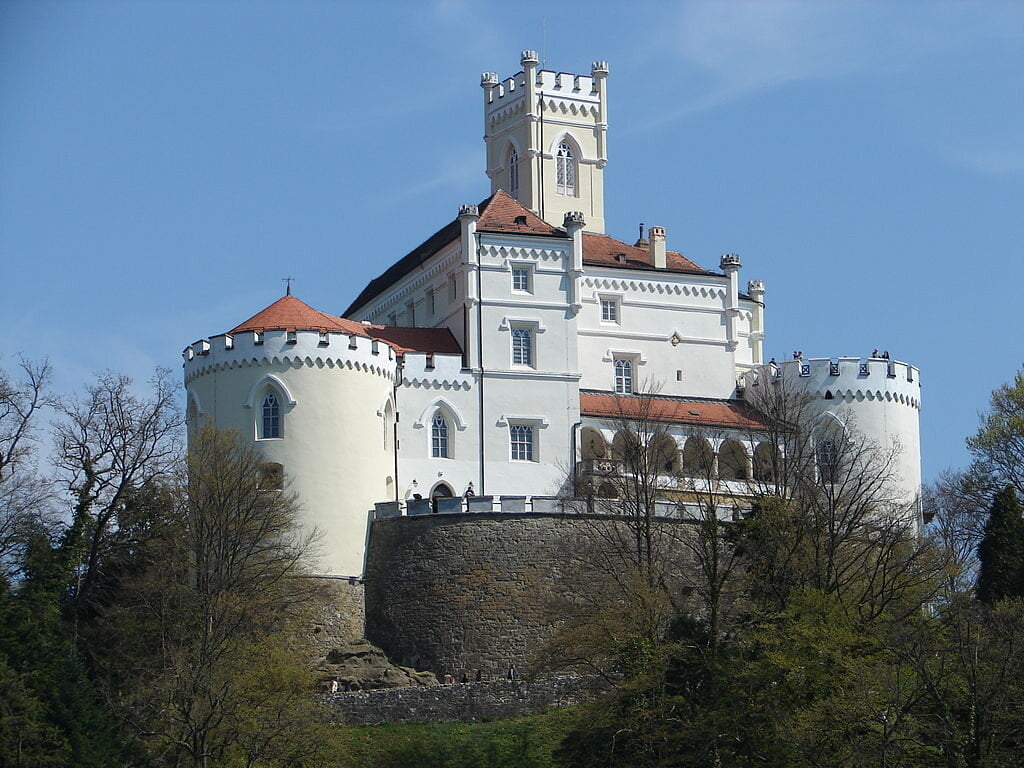
Trakoscan Castle was built atop a steep hill during the 13th century to monitor the surrounding roads. Its elevation gives visitors a picturesque view of a beautiful lake and gardens. The castle is only a few minutes away from the Varazdin, which makes transport easy.
Given a lack of documentation, historians haven’t been able to confirm the original owners of the castle. However, they do know that it landed in the hands of the Counts of Celje by the end of the 14th century.
Today, it belongs to the Croatian government has converted the castle into a museum. The permanent collections take you on a stroll through three centuries, exploring the building’s history across ten generations of rulers.
- Location: Krapina
- Time built: 13th century
- Architectural style: Neo-Gothic/Baroque/Rococo
- Touring: Allowed. Visit the official website for more information.
3. Starigrad Fortress
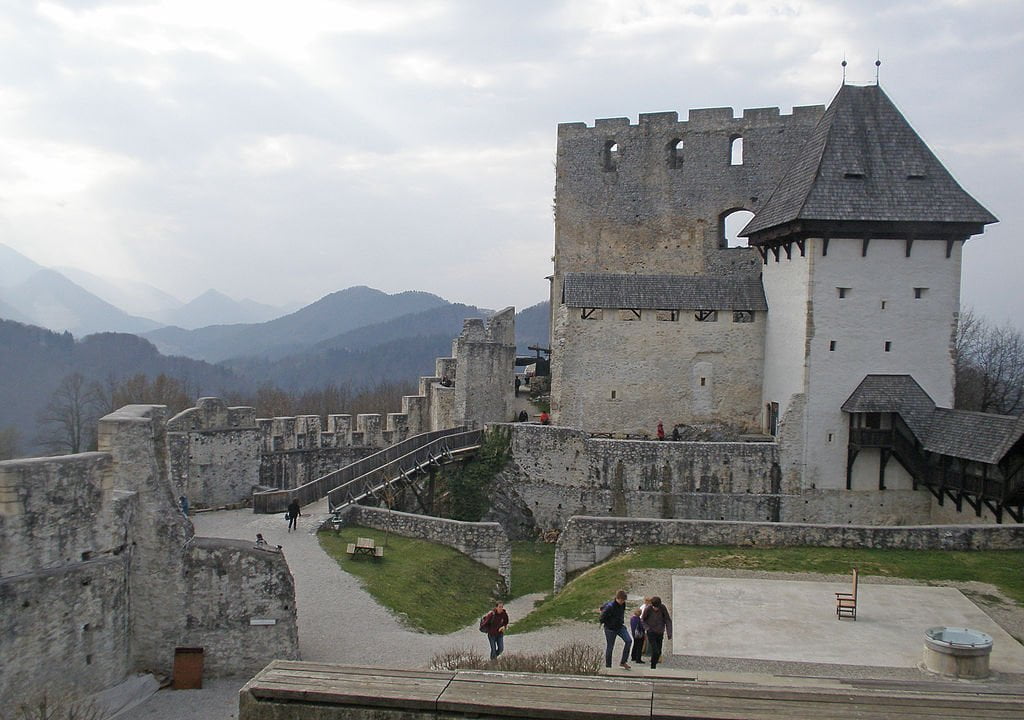
The Croatians built Starigrad Fortress in the 15th century to defend their country against the Ottoman Empire. The surrounding rough terrain made the fort impenetrable. Starigrad Fortress was built on a rock precipice 860 ft above Omiš, giving it a 360⁰ view of possible invaders and providing a place of refuge for farmers and villagers from the area.
Today, it gives tourists excellent hiking opportunities. Pack proper shoes and outerwear if you plan on going on this adventure. The fort also overlooks a gorgeous blue sea that allows for a breathtaking view. Be sure to take a camera or mobile phone with you so that you can take pictures!
Unfortunately, the fortress doesn’t have visitor facilities, like a restaurant, so you’ll have to pack your own meal. Even so, the stunning view and great exercise are worth the effort.
- Location: Omis
- Time built: 15th Century
- Architectural style: Medieval
- Touring: Allowed. Visit the official website for more information.
4. Varazdin Castle
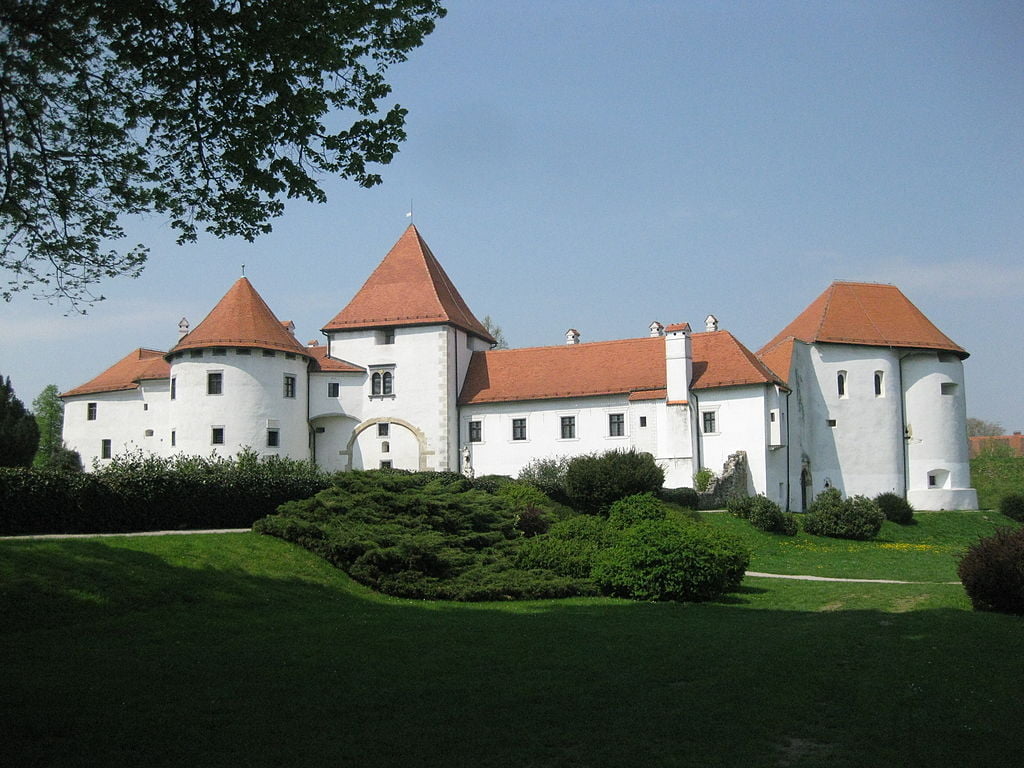
The fairytale aesthetic of Varazdin Castle is reinforced by its lush green surroundings and lovely backdrop. Construction began in the 14th century with two earthen ramparts on either side. Further construction in the 16th century included the addition of the bastions and high curtain walls.
Since 1925, it has hosted the Varazdin City Museum and spans a total of three floors. The most fascinating aspect of this museum is that the rooms are arranged in chronological order: Renaissance, Baroque, Rococo, to Empire. Each room is filled with costumes, jewellery, clocks, weaponry, and ceramics from the respective era, making this a veritable time-traveling experience.
It’s an attractive tourist destination these days, and visitors really love exploring the various displays. Outside, the mesmerizing surroundings are absolutely picturesque; tourists love meandering through the gardens to enjoy the gorgeous views.
- Location: Varaždin
- Time built: 14th Century
- Architectural style: Gothic
- Touring: Allowed. Visit the official website for more information.
5. Mailath Castle
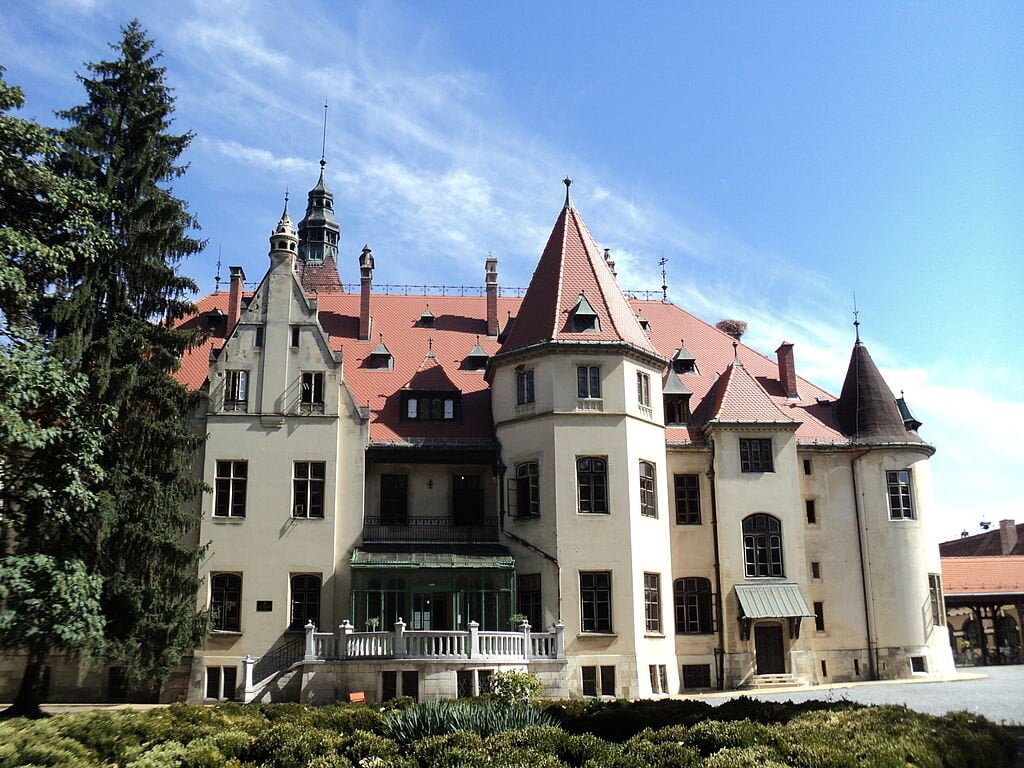
One of the very few examples of genuine Gothic architecture in Croatia, Mailath Castle is a work of art by Istvan Moller. It has dramatic fireplaces, rich wood paneling, and complicated yet beautiful patterned tile roofs. All in all, the castle is picturesque. It was originally built for the Prandaus (an aristocratic family) in the dual architectural style of the late Baroque-influenced Gothic, mixed with classic English Tudor.
Mailath was later sold to the Schlesinger family before being tragically abandoned during Croatia’s socialist era. Today, it has been renovated and is home to the municipal admin of Donji Miholjac under government ownership. Its beautiful architectural style, lush estates, and the original furnishings that are still featured inside certainly make it worth the trip.
- Location: Donji Miholjac
- Time built: 1818
- Architectural style: Late Baroque/English Tudor
- Touring: Allowed. Visit the official website for more information.
Revisit More Historic Places Below or Read Further
6. Tvrdalj Castle
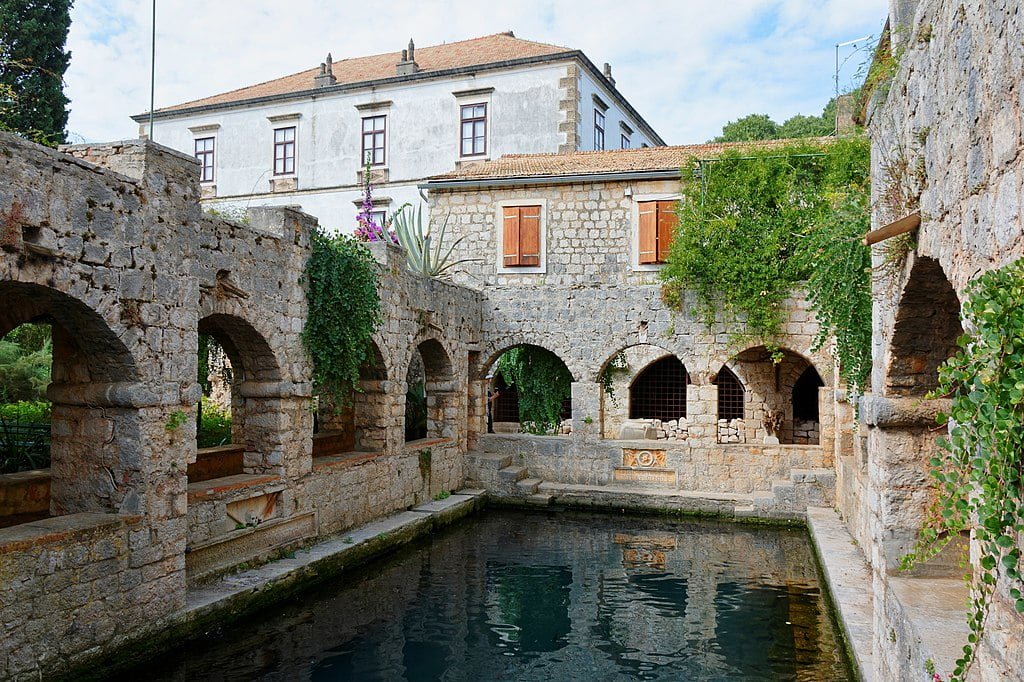
The site of Tvrdalj Castle, located on the island of Hvar, has long been home to a settlement, ever since it was initially established. The current castle was constructed in the 15th century, over the remains of an older fort. Most of the castle’s expansions happened in the 16th century when the Croatian poet Petar Hektorovic resigned Tvrdalj Castle to become his summer residence. He took care in the process to maintain the understated elegance of the design – just as its original owner had intended.
Major reconstruction works took place in the 19th and 20th centuries, which fashioned Tvrdalj into the castle that we see today. These days, it’s an interesting site for tourists. Visitors especially like the ponds and the stunning gardens.
- Location: Stari Grad
- Time built: 15th Century
- Architectural style: Renaissance
- Touring: Allowed. Visit the official website for more information.
7. Brod Fortress
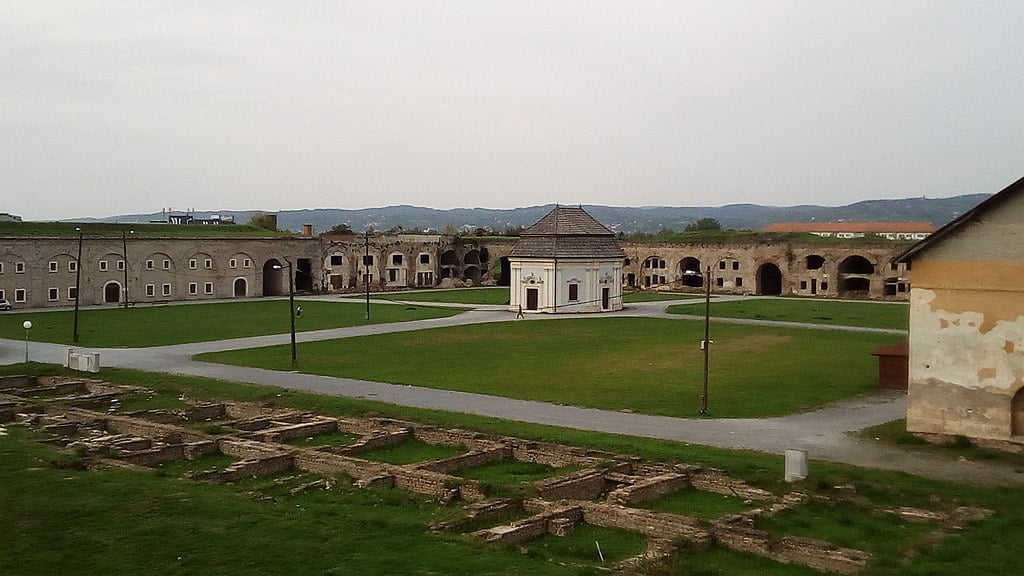
Brod Fortress was constructed at the behest of Austria’s Archduchy in the 18th century as a protection against Ottoman invasions. Its design was based on French military designs by Vauban.
The fortress was located strategically to control border crossings to Turkey, as well as serve as a connection for trade routes. This extensive fortress had three defence zones–southern, internal and external zones–while the surrounding moat was continually filled with water from a nearby stream, ensuring it never dried up. At its height, Brod could accommodate a whooping 4000 soldiers.
While previously a mighty defense fortress, Brod is now a lush, green tourist destination for those who love immersing themselves in the history, culture, and heritage of Croatia. Even today, this fortress draws a formidable and imposing picture amongst its picturesque surroundings.
- Location: Slavonski Brod
- Time built: 18th Century
- Architectural style: Renaissance
- Touring: Allowed. Visit the official website for more information
8. Cakovec Castle
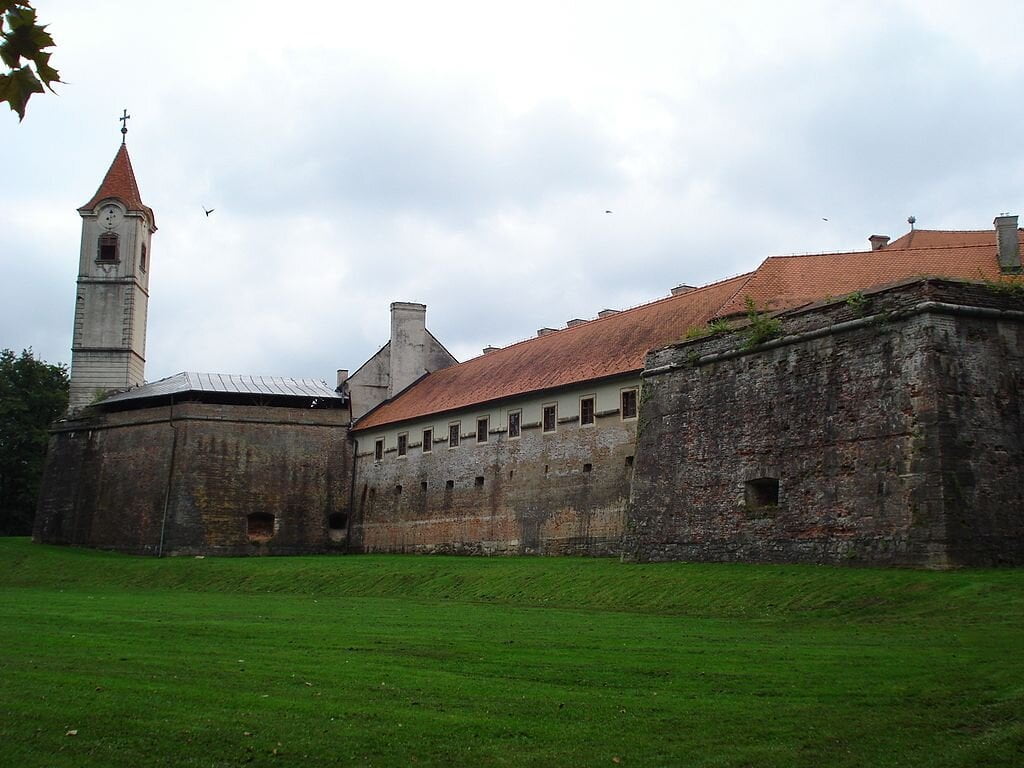
Cakovec castle is the largest fortification in Medimurje County. Standing beneath its huge fortified walls, one can only be in awe of this majestic engineering marvel that was constructed centuries ago.
This fortress was built by Baron Dimitrjie Čsák I Hahót in the early 13th century. The original buildings were constructed from cut stone and red brick, to protect the region’s northern borders from invading Turks.
Nikola IV Zrinski commissioned the further fortification and enlargement in the Renaissance style in the early 16th century. These later constructions took 100 years and were completed by his great-grandson in 1638. This made it the largest fortified castle in the Medimurje region.
An earthquake in 1738 destroyed much of the original castle before it was rebuilt in the Baroque style by royal architect Anton Martinelli.
- Location: Cakovec, Croatia
- Time built: 13th Century
- Architectural style: Contemporary Baroque
- Touring: Allowed. Visit the official website for more information.
9. Marusevec Castle
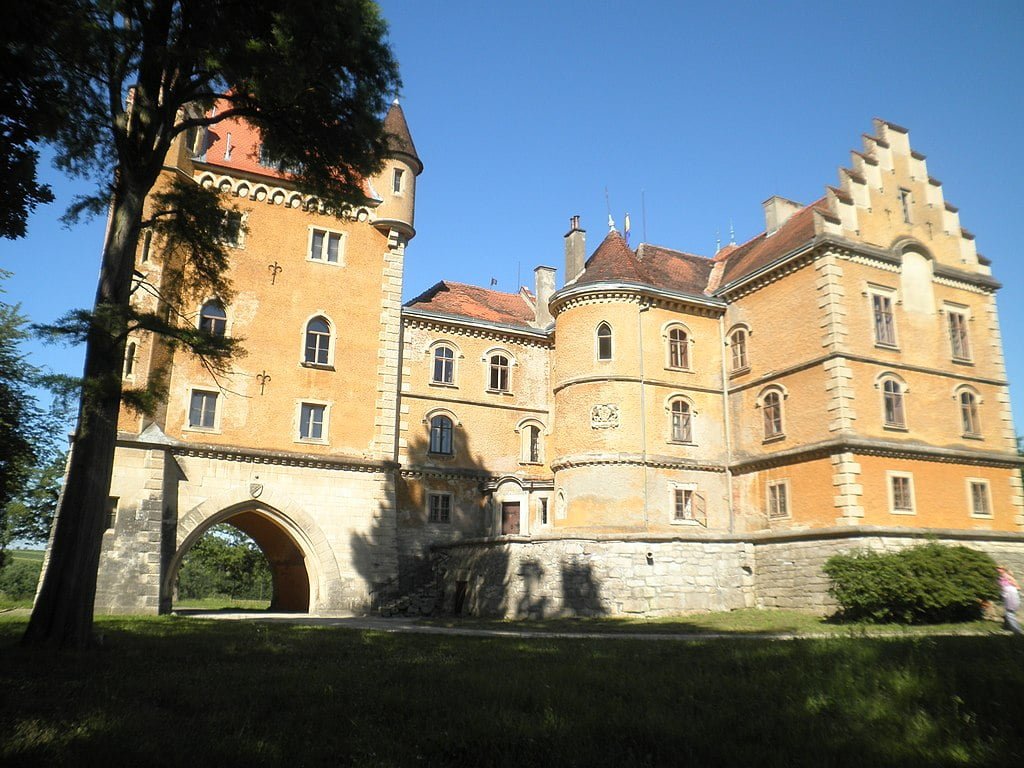
Originally built in the 14th century, the central part of this castle is one of the oldest castle keeps still standing in Croatia. The square castle with surrounding trenches, four circular towers and a magnificent square tower was built around the keep in the early 16th century, by the nobleman Baltazar Vragovic. This information is actually inscribed next to the coat of arms on the western wall of the first floor.
The castle changed owners several times throughout the centuries until it was purchased by Oscar de Pongratz who commissioned Swedish architect Carl Gustav Swensson to alter the entrance and the steps which are still in use today. Tapestries of hunting scenes and works of Monacelli still decorate the interior.
- Location: Marusevec, Croatia
- Time built: 16th Century
- Architectural style: Gothic Renaissance
- Touring: Allowed. Visit the official website for more information.
10. Ozalj Castle
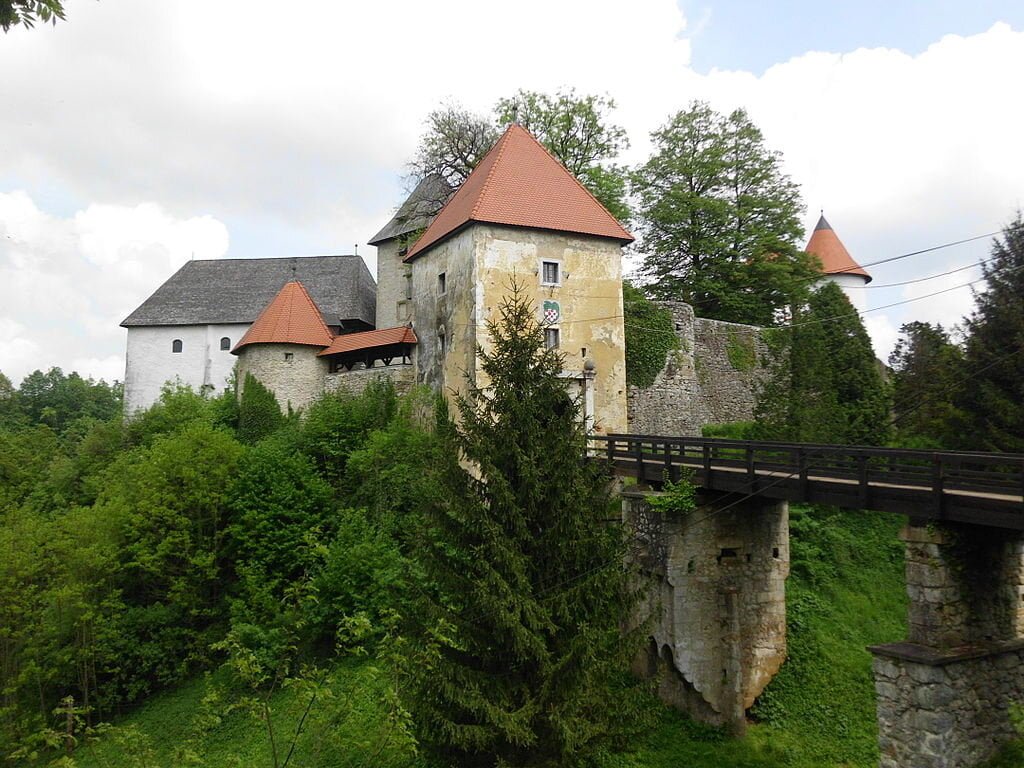
Ozalj Castle is built on a 479-foot-tall stone cliff with a magnificent view of the Kupa River. This castle is the site where the Magnate Conspiracy was planned between the Frankopand and Zrinski families. The attempted, but poorly organised, coup to overthrow the Habsburgs was ultimately unsuccessful and anticlimactic.
The Frankopans and Zrinskis actually co-owned the castle throughout the 13th century. This was an odd arrangement for its time and one of the main reasons for Ozalj Castle’s acclaim. This fame is only built upon by the on-site museum that takes visitors back through time.
Visiting Ozalj Castle today is similar to stepping into a fairytale. The elevation gives a sense of grandeur and supremacy, along with picturesque views. Meanwhile, the architecture is pristine and well-preserved to this day.
- Location: Ozalj, Croatia
- Time built: 13th Century
- Architectural style: Medieval
- Touring: Allowed. Visit the official website for more information.
Planning to Visit Nearby Countries? Check Out These Best Castles Lists:
10 Less Popular Castles Worth Visiting While In Croatia
If you are a castle enthusiast, you must take out the time to visit these equally spectacular castles in Croatia as well:
11. Pazin Castle
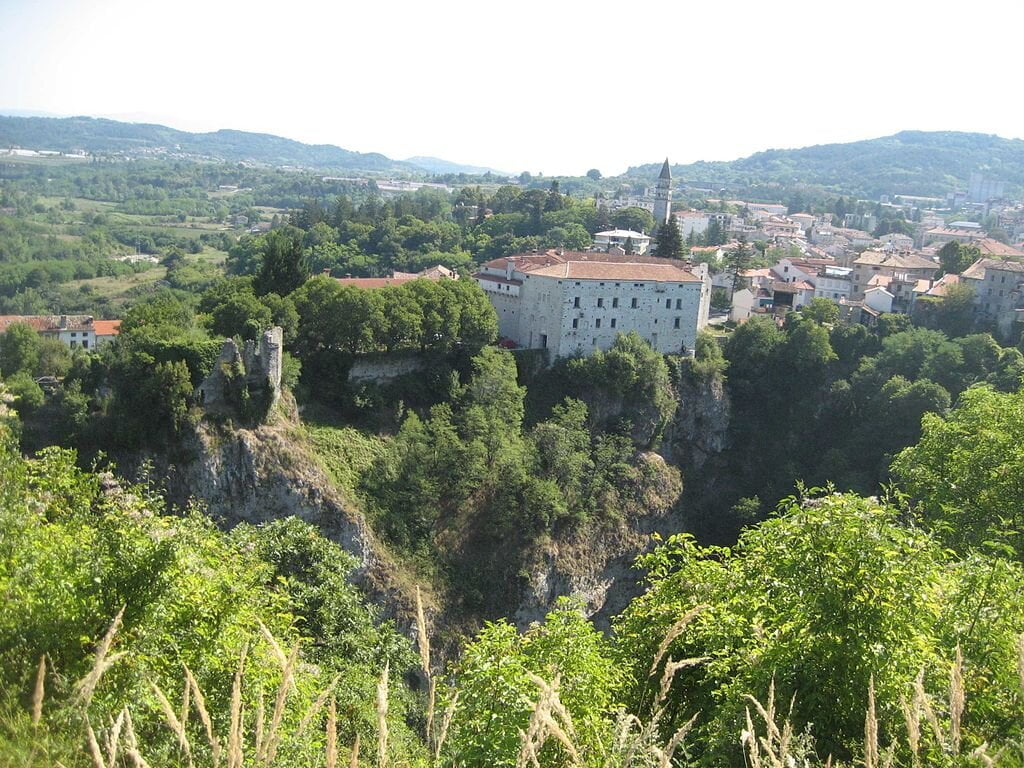
Pazin Castle is a medieval fortification that was built on a huge rock in the 10th century. After the fall of the Venetian Republic in 1797, the castle went to the Habsburg Monarchy. Then Napoleon’s French Empire took over until the Habsburgs regained power. In 1918, it went to Italy, in 1945 to Yugoslavia, and in 1991 to Croatia.
Pazin is currently the administrative seat of Istria County, retaining its amazing view of the gorge below and the scenic countryside.
- Location: Pazin
- Time built: 10th Century
- Architectural style: Transitional (New Styles Added Over The Centuries)
- Touring: Allowed. Visit the official website for more information.
12. Pejacevic Castle
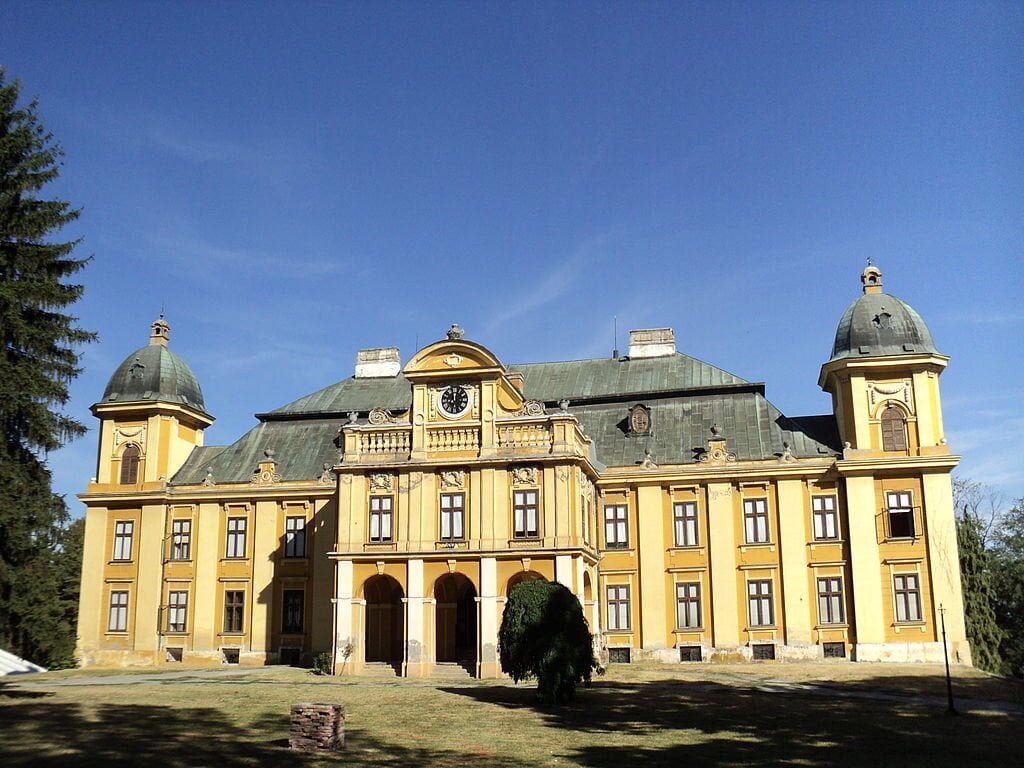
The Croatian Pejacevic noble family built this magnificent residence between 1800 and 1804 on the foundations of an original Medieval fortress. After an earthquake in 1817, a renovation & expansion project added rounded towers at the end of each wing. The magnificent building with a grand covered entrance is located in the most beautiful-landscaped park.
Today Pejacevic Castle is a museum that houses collections of artifacts, both historical and cultural, and is a gem in this region.
- Location: Virovitica, Croatia
- Time built: 18th Century
- Architectural style: Neo- Baroque
- Touring: Allowed. Visit the official website for more information.
13. Trsat Fortress
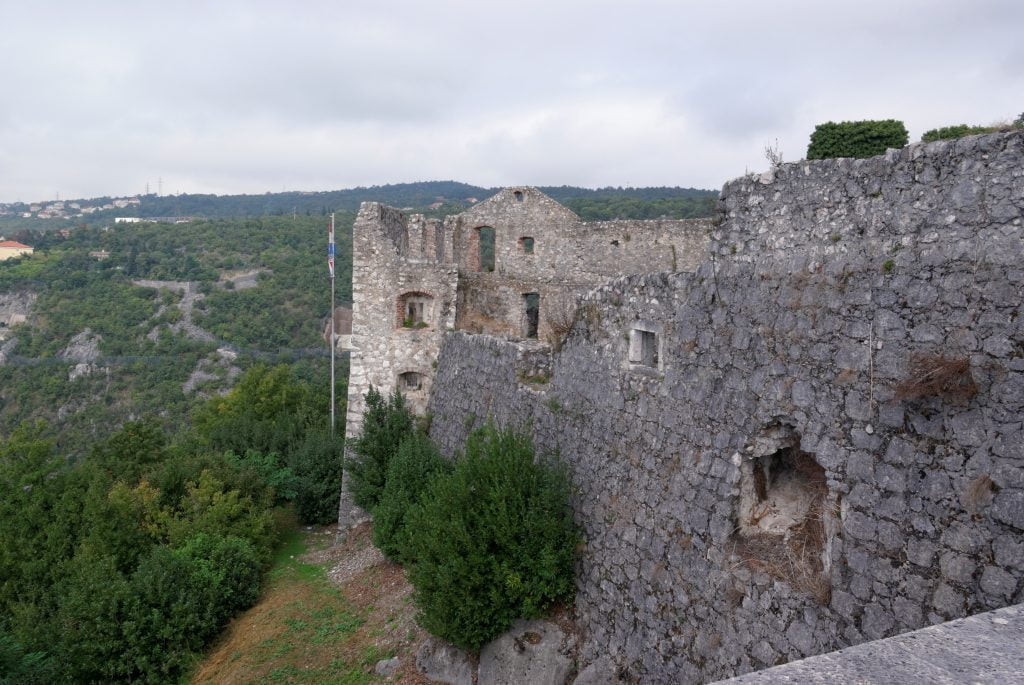
Tsrat Fortress and the fortified town was built by the Croatian noble family Francopan in the 13th century, allegedly on top of an older Illyrian & Roman fortress. The lands and castles remained in the family for centuries. During the 15th and 16th centuries, the Hapsburgs and Francopans waged many wars to rule this important stronghold and, in 1527, even the Turks inhabited Tsrat and the surroundings. In the 18th century, Laval Graf Nugent restored the castle in the Neo-Gothic style and added Doric Columns.
- Location: Tsrat, Croatia
- Time built: 13th Century
- Architectural style: Neo-Gothic
- Touring: Allowed. Visit the official website for more information.
14. Bezanec Castle
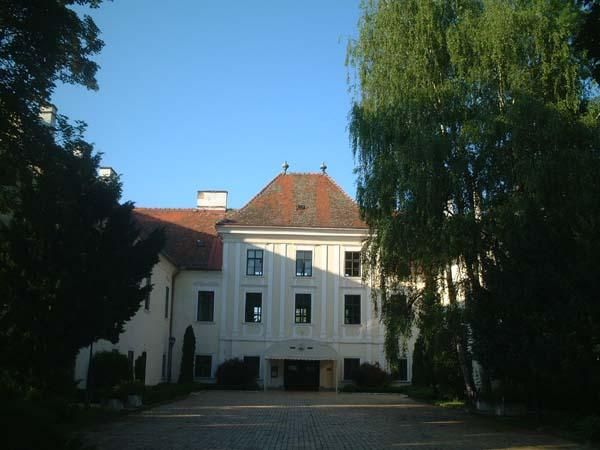
Count Keglevic built Bezanec Castle in the 17th century. By the end of the Second World War, the building was left devastated; it wasn’t until 1990 that Sinisa Krizanec invested in the castle’s future.
Today, Bezanec Castle stands tall as a fully equipped luxury hotel. Its management has reserved most of the available facilities for paying guests; however, the restaurant is open to everyone. The chefs make amazing meals from locally sourced ingredients. When paired with the fantastic view surrounding the castle, you are bound to have an excellent time.
- Location: Bezanec
- Time built: 17th Century
- Architectural style: Baroque
- Touring: Not open to the public.
15. Cetin Castle
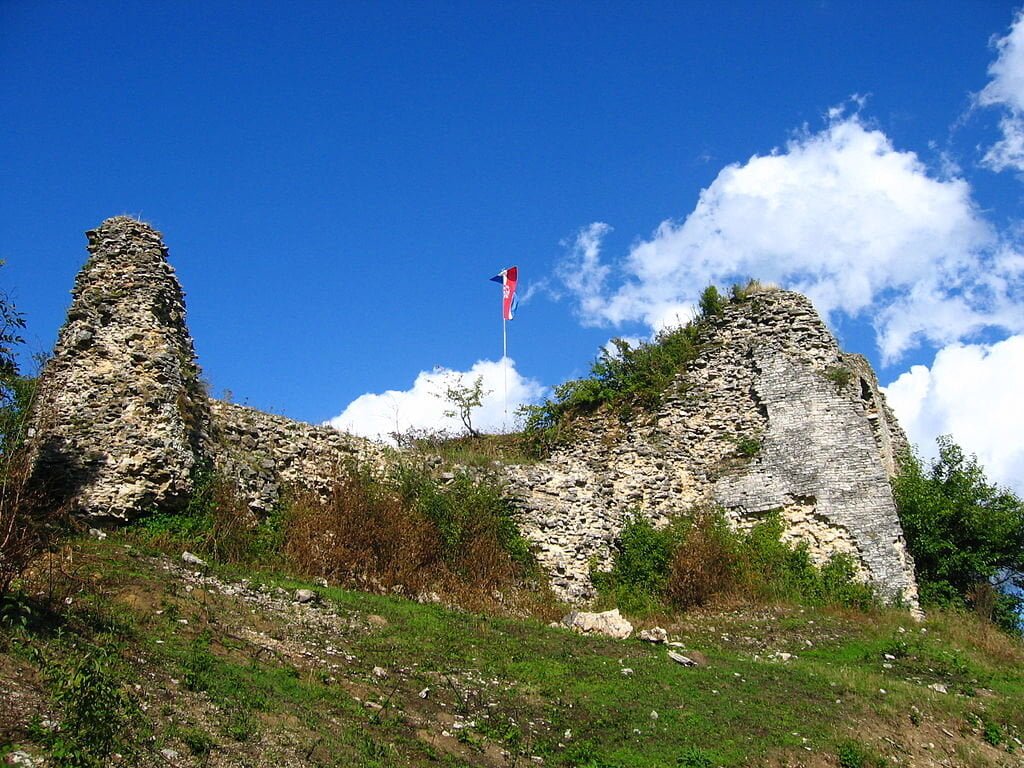
King Sigismund, the Holy Roman Emperor, gave the fortress to the Francopian noble family in the 14th century. Several key features of the castle are reminiscent of the Roman Empire.
Cetin became a central military force between the Hapsburgs and the Ottoman Empire for the next few centuries. Although the Turks inhabited the castle and lands in 1809, they abandoned the area barely a year later. They stripped everything of value and left Cetinin in ruins.
- Location: Podcetin, Croatia
- Time built: 14th Century
- Architectural style: Tentative Roman Era Fortress
- Touring:Allowed. Visit the official website for more information.
Revisit More Historic Places Below or Read Further
16. Luznica Castle
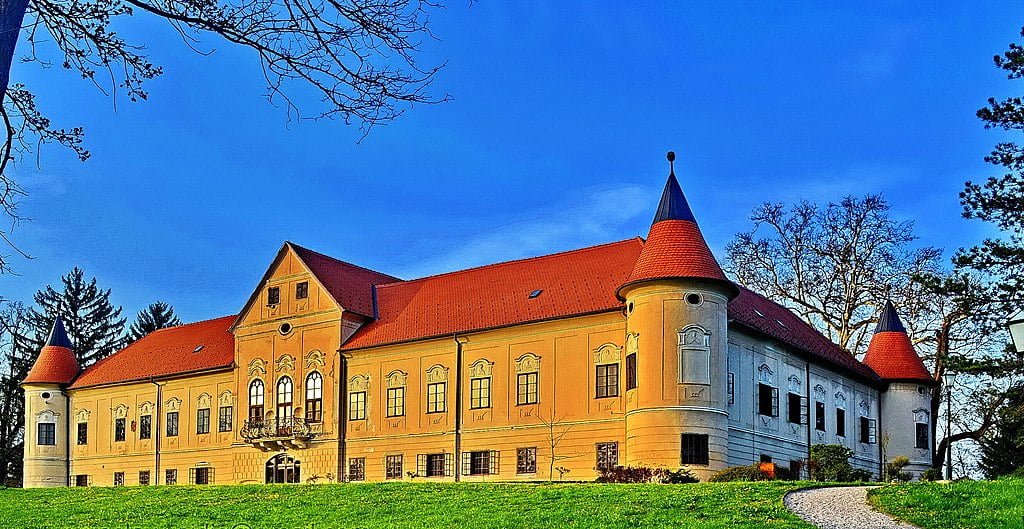
The castle of Luznica was originally built by a noble family from Italy, the Cikulinis, in the 16th century. The Baroque architecture is characterized by the central social hall that divides the castle into two different spaces, each wing featuring beautiful balconies.
Rauch nobles extended the castle in the 18th century and it was home to the ban (Baron) Levin Rauch, an important historical figure in Croatian history, who was born and died in the castle.
- Location: Zapresic, Croatia
- Time built: 16th century
- Architectural style: Baroque
- Touring: Allowed. Visit the official website for more information.
17. Orsic Castle
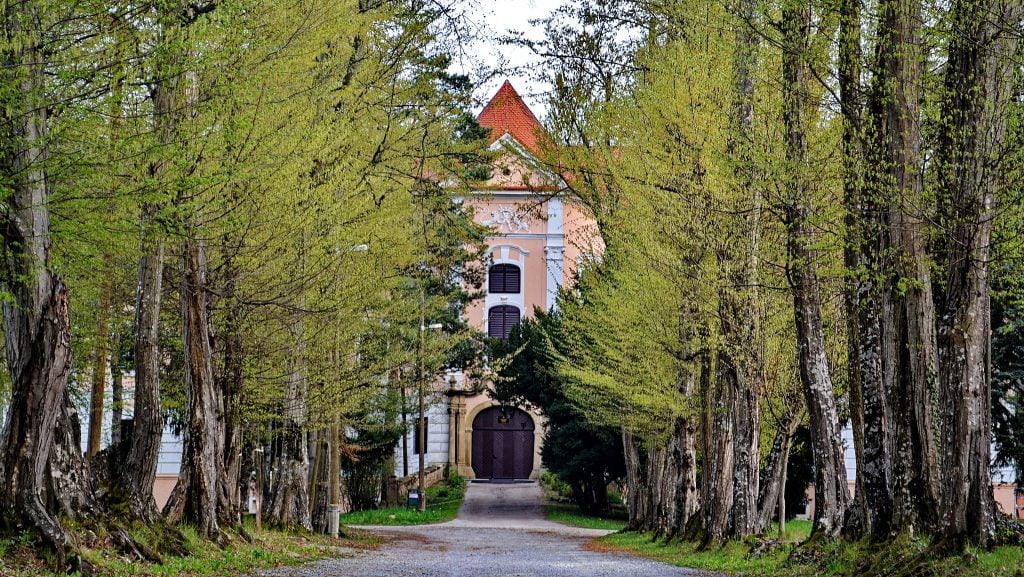
Orsic Castle was built in 1756, on the site of an old fortress from the Middle Ages. After an earthquake in the 19th century, the castle was rebuilt with a classicist porch and columns.
In the 1960s and 70s, the government repurposed the castle as a museum & monument commemorating a tragic peasants’ revolt from 1573. Both the museum and the monument remain open to the public today as a fantastic exposure to Croatian history. Appreciate the modern additions juxtaposed against the 18th-century original building while you explore.
- Location: Gornja Stubica
- Time built: 1756
- Architectural style: Baroque
- Touring: Allowed. Visit the official website for more information.
18. Stara Susica Castle
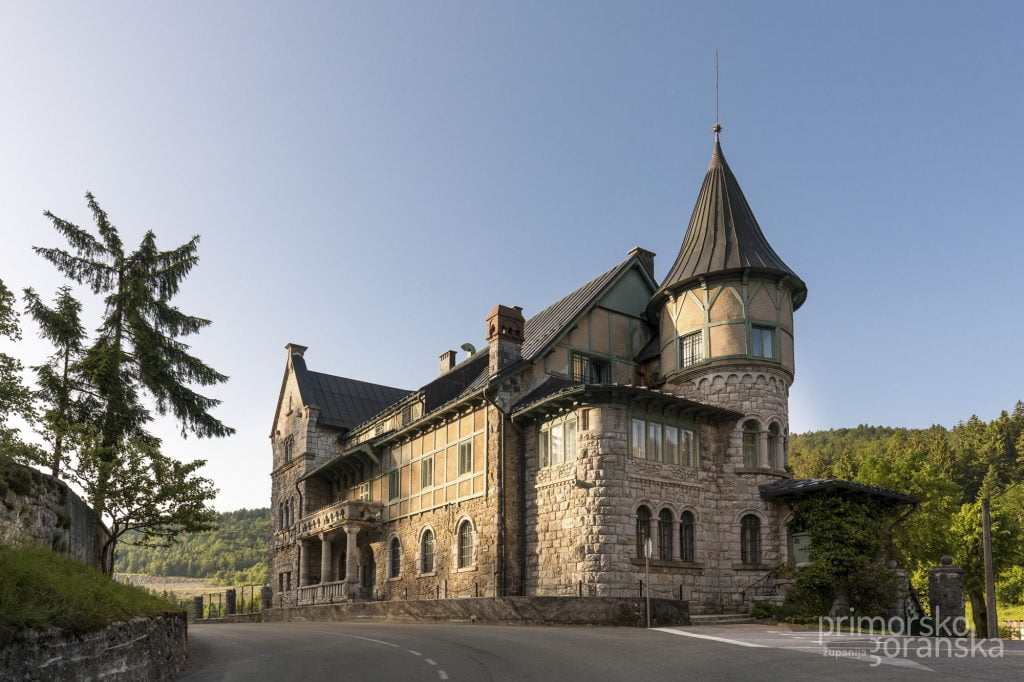
The original stone structure was built early in the 14th century to protect local villagers from invading Turks. The Zrinski family added later modifications to build up the stronghold. Despite their efforts, the Turks occupied the region on three separate occasions: 1525, 1578, and 1585. Both local villages were destroyed by invading troops on 22 July 1786.
During the 19th century, the castle was restored by its Irish owner, an aristocrat captivated by the area’s history. Further restorations later led to the structure we see today.
- Location: Stara Susica, Croatia
- Time built: 14th century
- Architectural Style: Romanesque
- Touring: Allowed. Visit the official website for more information.
19. Velki Tabor Castle
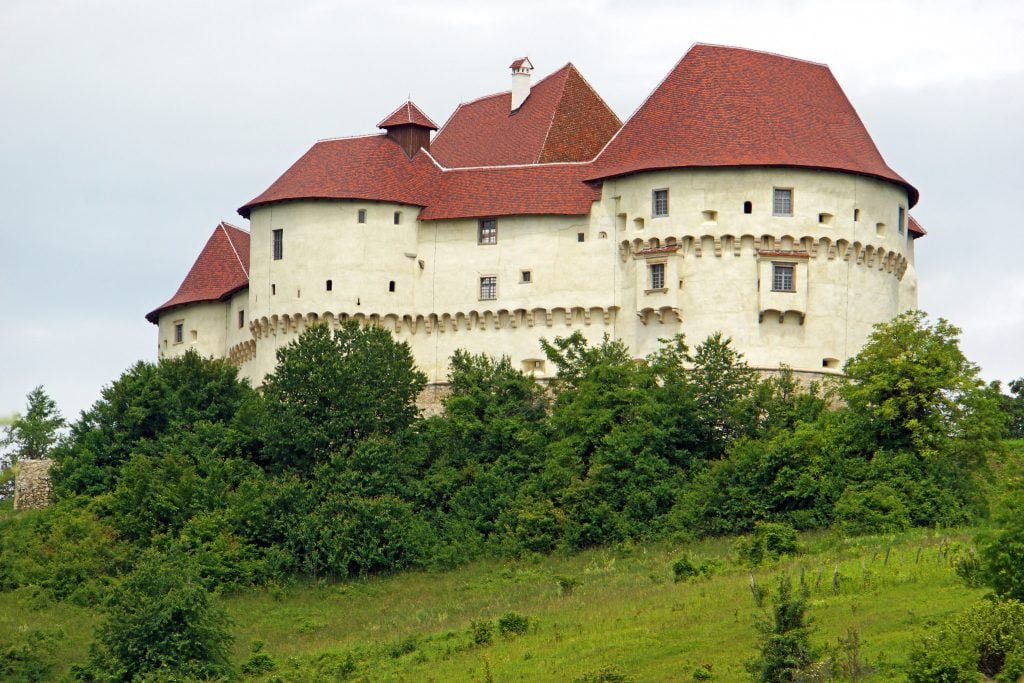
While Velki Tabor Castle was built in the 15th century, the version we see today wasn’t started until the 16th century. The Hungarian noble family of Rattkay owned it until 1793.
Today, it is under the control of the Croatian government manages it as a museum and uses it to host international short film festivals, since 2002.
It is said that you can hear the ghost of Veronika, a Middle Age girl accused of witchcraft and drowned at Velki Tabor, weeping to this day.
- Location: Desinic, Croatia
- Time built: 15h century
- Architectural Style: Medieval
- Touring: Allowed. Visit the official website for more information.
20. Diocletian’s Palace
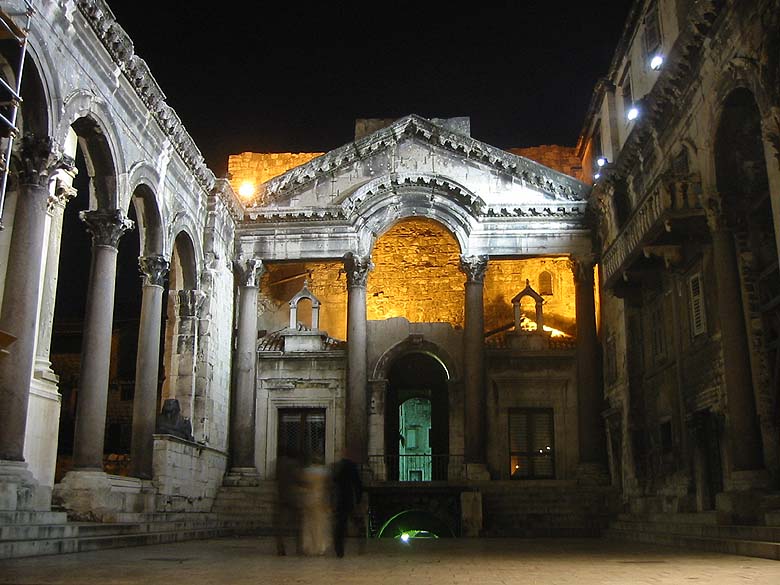
Diocletian’s Palace was built for Roman emperor Diocletian in 4 AD as a large fortress – half for the owner’s personal use and the other half for his military garrison. Its dual Greco-Byzantenian architectural style makes it one of the most well-preserved examples of its kind.
The palace was also once used as a refuge by the people of ancient Salona, which is when the old walls and ornaments morphed into new structures. In 1979, UNESCO declared the palace a World Heritage Site.
- Location: 6 km southwest of Salona
- Time built: 4th Century AD
- Architectural Style: Roman Palatial (Greek/Byzantine)
- Touring: Allowed. Visit the official website for more information.
Planning to Explore Europe? Check Out These Best Castles Lists:
Conclusion
Croatia is a fantastic country to visit for both experienced explorers and first-time travelers. Just remember to save money on transport by using buses instead of taxis or trains and pack light.
Also, the castles are beautiful and have a rich history – exploring them will take time. Avoid rushing your visits and take as long as you need at each location.

